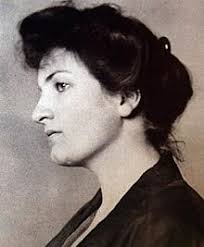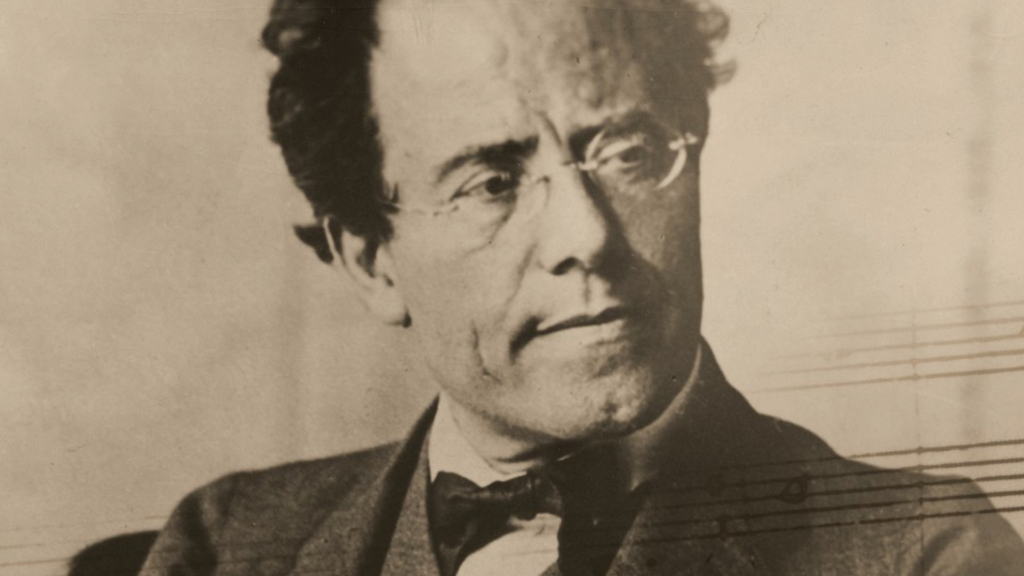When OrchLab visited St Cecilia’s and Garwood Foundation in early 2020, we used Mahler’s Symphony No.5 as our project inspiration. This Listening Guide gives some background information about Gustav Mahler and his fifth symphony, and takes you through the beautiful Adagietto movement.

Gustav Mahler
Gustav Mahler was an Austro-German composer who lived between 1860–1911. He wrote his 5th Symphony in 1901–2. During his lifetime he was more famous as a conductor of opera than as a composer and he only had a chance to write music during the summer holidays when the opera house was closed.
He used to travel to the mountains every summer, where he had house with a small hut in the garden where he would work. He didn’t like to be disturbed when he was working, and the rule was that if the door was open you could go and talk to him, but on no account must he be interrupted if the door was closed!

He wrote nine symphonies and they’re all long pieces of music in several movements. Mahler thought that a symphony should be like the world, it should contain every kind of musical emotion. Of his third symphony he said:
“Just imagine a work of such magnitude that it actually mirrors the whole world – one is, so to speak, only an instrument played on by the universe…. My symphony will be something the like of which the world has never yet heard! In it the whole of nature finds a voice”
But in many ways, all his symphonies are like this – when you get to know them they’re rollercoasters of drama and emotion, containing music which is sometimes happy, sad, anxious, dramatic, sublime, funny, nasty – it’s all in there!
Not only are the symphonies long, but he also wrote them for large orchestras, in fact his 8th symphony is nicknamed ‘Symphony of a Thousand’ because sometimes it’s performed by 1000 instrumentalists and singers!
Mahler’s Symphony No.5
Like all the others, Mahler’s 5th Symphony contains every type of emotion. It starts with a funeral March, but there’s also dramatic music (as if there’s a chase!), there are waltzes and a massive, triumphant ending!
The Adagietto from the 5th symphony is the shortest movement, lasting about 10 minutes, and unusually it doesn’t use the full orchestra: it’s just written for strings and harp – there’s no woodwind, brass or percussion.
Apparently he wrote the piece to represent the love for his soon-to-be wife Alma and the piece is full of yearning beauty. It is lyrical and slow, but with emotional, passionate outbursts.
You might have heard the piece before – it was made famous in the 1971 film Death in Venice directed by Luchino Visconti.

Where to find it
You can find recordings of this piece easily online, by searching for “Mahler Symphony 5 Adagietto”. The LPO have also recorded a CD of the whole symphony, which you can buy online via this link.
Listening to the Adagietto
One way of listening to the piece is to lie back and shut your eyes for 10 minutes. Try and follow the changing mood – sometimes it is quiet and contented, but then there’ll be a sudden emotional outburst with the strings soaring upward before fading away to calm again. Immerse yourself in the piece – enjoy it!
If you’d like to be guided through the piece, here are some things to listen out for:
Opening
The piece starts very quietly with some held notes and a gently rippling harp. The violins play a very slow melody in their low-middle register.
When the melody is repeated, it’s played by the cellos (though they play at the same pitch as the violins).
There is a moment of intensity, though the music is still quiet, before it gradually builds to a climax – an outburst before dying away again.
Middle section
The next section starts a little quicker and louder. It then becomes quiet, but keeps trying to build up and get louder before suddenly dropping back to quiet. The violins have the melody here, playing in the upper register – so it can sound like the music is trying to take off, but never quite being allowed to do so.
Ending
The music fades away – there’s a gentle ripple on the harp, and the opening melody returns. The music stays calm and subdued for a while, until there’s a final climax with the violins playing their highest and longest note, before the piece fades away.
